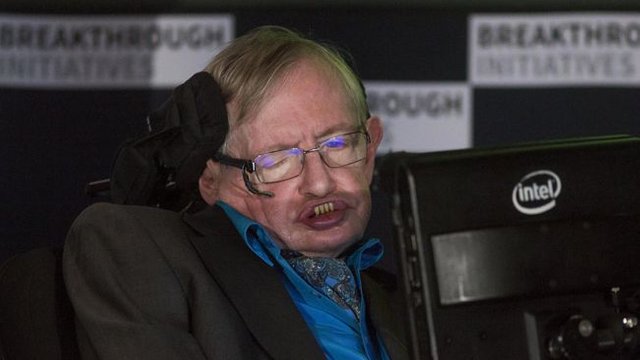Stephen Hawking and The Three Controversial Theories
The news of the aging Stephen Hawking on Wednesday (14/3) early morning British time leaves a deep sorrow for the world of science. Hawking who suffered from motor neurons live for 56 years still spawned a number of theories related to the universe and cosmology.
Before the last breath, Hawking is known as a modern science figure who often debates his idea. He also often criticized different theories to prove the veracity of the bow.
Here are some Hawking theories that are considered to contribute greatly in the field of cosmology and physics:
Big Bang Theory
In the movie 'The Theory of Everything' narrates the difficulty of young Hawking life played by Eddie Redmayne. At that time, Hawking had to struggle in developing the theory of the origin of life in the universe.
In the midst of his limitations, he sparked the Big Bang theory that states that the universe starts from a small point that then grows large.
Hawking realizes that Big Bang is like a collapse of a black hole in reverse. Now, the idea of Hawking has been widely accepted while still reaping debate.
He published his theory of findings with Roger Penrose in 1970 to show that general relativity like the universe must have started from a singularity. But then he realized if the black hole will not shrink, it gets bigger.
Quantum Gravity Theory
This theory is based on the general theory of relativity proposed by Albert Einstein. In 1959, Hawking earned his bachelor's degree at the University of Oxford to test the idea of quantum gravity.
He also combined the theory he developed with the version of Jacob Bekenstein.
Quantum theory is used to describe small, invisible things, such as atoms and component particles. While general relativity is used to describe matter on the cosmic scale of stars and galaxies.
The two theories seem to paradox each other in which the general theory of relativity assumes that the universe is smooth and sustainable as paper sheets. While quantum theory assumes that the universe and everything in it is still rough on the smallest scale, it is divided into distinct bumps.
According to quantum theory, allegedly empty space is actually far from emptiness. That's because the universe can not be smooth or completely empty on all scales. Instead, the space is alive with activity.
Hawking Radiation
In 1974, hawking argued about the radiation released by black holes due to quantum effects near the event horizon. In general relativity, the event horizon is the frontier in space-time where it lies around a black hole.
This theory is based on a quantum theory that says that there are spouses of particles that are constantly drifting spontaneously from nothing to exist in space. Both are made of other materials and antimatter.
One particle has positive and other negative energy. Both then destroy each other so quickly that it can not be directly detected. As a result, they are called "virtual particles".
Hawking argued that the pairs of these particles could be increased from virtual to real. But only if they are made right next to a black hole. It is possible that one partner will be sucked in the event horizon so that his partner will be stranded. The stranded particle then goes into space and is released from the black hole.
If the negative energy particles are absorbed by the black hole, then the total energy of the black hole will decrease with its mass which also decreases. While other particles then bring positive energy into space.
At the end of this hypothesis, Hawking drew the theory that black holes could not shrink. Thanks to this theory, he realized that the black hole slowly evaporated and did not turn black at all.
